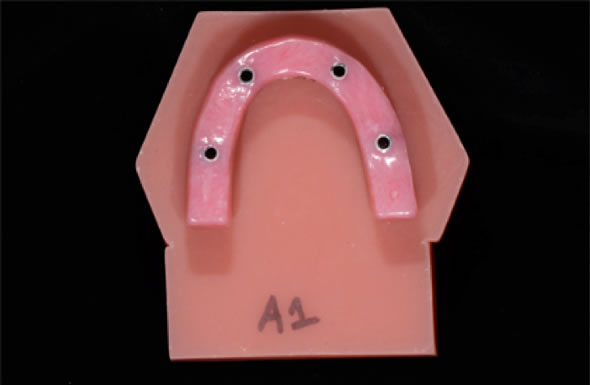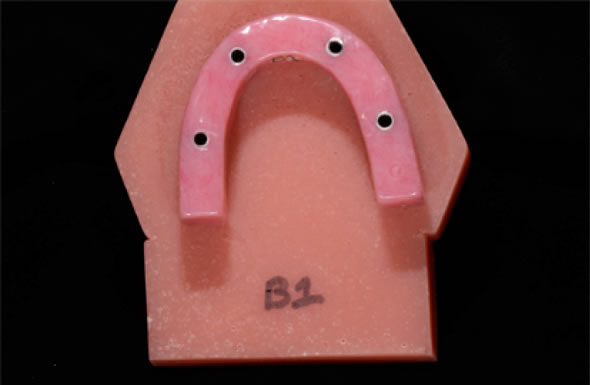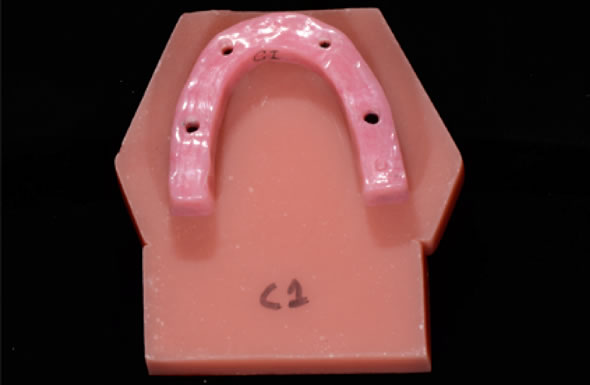
If you are a
customer from
UNITED STATES,
click below.
BUY NOW!
|

If you are a
customer from
CANADA,
click below.
BUY NOW!
|
CST® - Study Summary
Test of Distal Extension: Implant supported fixed hybrid dentures
It's generally accepted that the weakest and most vulnerable portion of an implant-supported fixed hybrid denture is the distal extension, due to the effect of cantilever forces. As a result great care is taken when designing the supporting framework to ensure the length of the framework remains within safe tolerances; both to ensure that the extension does not break, and to ensure the most distal implant is not subjected to damaging forces. The study conducted by Drs. Goldberg, Ronaghi, Park, Jivraj, and Chee looked specifically at the resistance to fracture of a 10mm distal extension of CST® frameworks versus no reinforcement and milled titanium bars in implant-supported fixed hybrid dentures. The following is a summary of the results of the study.
Force to failure of an implant supported fixed detachable prosthesis reinforced with a novel glass fiber compared to conventional techniques.
Goldberg J, Ronaghi G, Park J, Jivraj S, Chee WWL
(submitted for publication)
Objectives
The purpose of this study is to compare the load to fracture resistance of an unreinforced acrylic implant supported fixed-detachable prosthesis compared to a novel glass fiber reinforced and a titanium milled bar. It was hypothesized that the glass fiber reinforcement prostheses will have higher fracture resistance than the un-reinforced prosthesis, but lower fracture resistance than the titanium bar prosthesis.
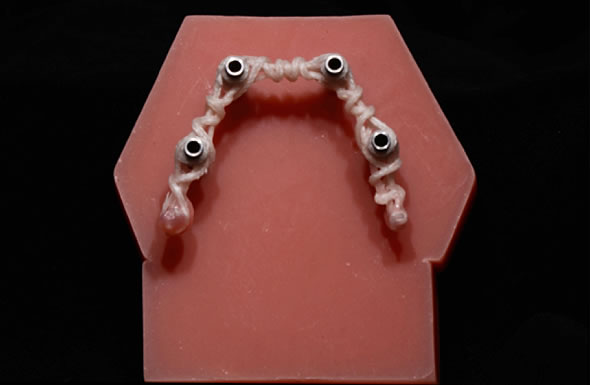
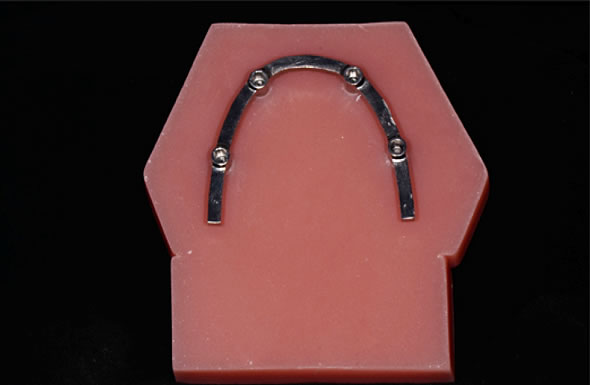
Materials and Methods
30 specimens were divided in three groups: Group A was processed without any type of reinforcement, Group B was reinforced utilizing a novel glass fiber technique (CST®), and Group C was processed over a milled titanium bar with a wrap-around design. The testing models were fabricated using a positioning jig and a polyvinylsiloxane mold to standardize 4 simulated implant positions.
The wax patterns were processed with heat-cured acrylic resin with traditional flasking techniques and afterwards the specimens were stored in water.
Each specimen was tested until failure under compressive load in a universal testing machine, at a crosshead speed of 1 mm/min, recording the maximum force in Newton.
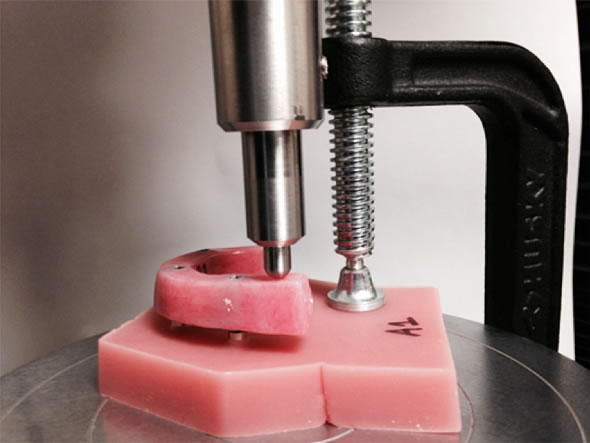
Results
Mean force required to fracture
| GROUP A: No reinforcement |
1,072.64 N |
| GROUP B: With CST® |
1,400.75 N |
| GROUP C: With a milled titanium bar |
1,652.78 N |
Mean force required to fracture the specimens in Group A was 1,072.64 N, Group B was 1,400.75 N and Group C was 1,652.78 N. The ANOVA statistical analysis of the results demonstrated statistically better performance of Group B compared to Group A, and a statistically better performance of Group C to Group B. Fracture load was dependent on the acrylic resin tensile strength. The results demonstrated a catastrophic failure for Group A, while in Group B and Group C the fractured fragment was being held by the glass fibers and titanium bar respectively.

Conclusion
Test results from this well-designed and robust study show that in the most vulnerable portion of the appliance the CST framework achieved 85% of the fracture resistance of the milled titanium bar when subjected to a static force. It can be noted that in all three sample groups the resistance to fracture exceeded the maximum force that can be generated intra-orally in the posterior-acknowledged to be in the area of 500 N[1].
[1] - J. F. BATES, G. D. STAFFORD and A. HARRISON. Masticatory function-a review of the literature: (II) Speed of movement of the mandible, rate of chewing and forces developed in chewing. Journal of Oral Rehabilitation, October 1975, Volume 2, Issue 4, 349-361.

If you are a
customer from
UNITED STATES,
click below.
BUY NOW!
|

If you are a
customer from
CANADA,
click below.
BUY NOW!
|



